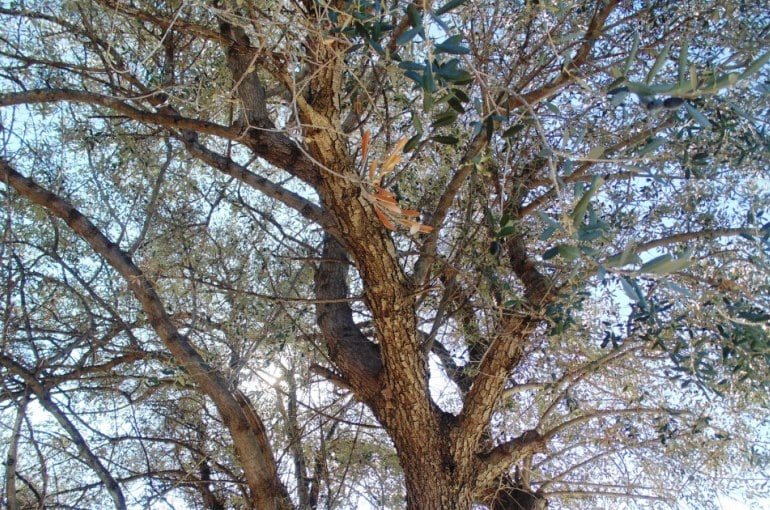Olive Tree Fertilizer Requirements

This post is also available in:
This post is also available in:
![]() Español (Spanish)
Español (Spanish) ![]() Français (French)
Français (French) ![]() Deutsch (German)
Deutsch (German) ![]() Nederlands (Dutch)
Nederlands (Dutch) ![]() العربية (Arabic)
العربية (Arabic) ![]() Türkçe (Turkish)
Türkçe (Turkish) ![]() 简体中文 (Chinese (Simplified))
简体中文 (Chinese (Simplified)) ![]() Italiano (Italian)
Italiano (Italian) ![]() Ελληνικά (Greek)
Ελληνικά (Greek) ![]() Português (Portuguese (Brazil))
Português (Portuguese (Brazil)) ![]() polski (Polish)
polski (Polish)
How to fertilize Olive trees – Olive Farm Fertilization
It was previously believed that the olive tree was suitable for poor and dry soils and could give medium yields on land considered unsuitable for other tree crops. This is partially true, but it doesn’t mean that the olive tree actually prefers such an environment. The olive tree prefers fertile soils with adequate moisture, so that it can give sustainably high yields for many decades.
Before we apply any fertilization method in our olive grove, we shall check the physical properties of soil (texture, soil permeability etc.) as well as the levels of available nutrients. These figures influence various others variables that finally affect yield. Thus, knowing them is useful for dealing with lack or excess of some nutrient and avoiding tree stress. Two very interesting parameters are the soil pH and the soil calcium content, because they both affect the absorption of some nutrients that are supplied by fertilizer. The optimum pH for the olive tree is about 6,5 but the average olive tree can produce fruits at soils with pH from 5,5 to 8. A common corrective action in order to fix the soil pH before planting young olive trees is adding lime to the soil (consult your local licensed agronomist).
The minimum acceptable nutrients rates after chemical leaf analysis are 1,5% for N, 0,1% for P and 0,5% for K. Nitrogen is the most important nutrient element when we grow olive tree for olive oil or table olives. Nitrogen is necessary for germination and production of olives. The main symptom of a lack of nitrogen is small in length annual vegetation. The leaves are much shorter than normal and do not gradually turn deep green as normal leaves. When we diagnose a lack of Nitrogen, we should consult the local agronomist in order to form a rational fertilization program.
A common olive tree fertilization scheme used by hundreds of experienced olive farmers involves adding 8-15 lbs. (4-7 kg) of N-P-K 11-15-15 fertilizer in every adult tree once or twice a year. The most suitable period is during fall and winter in non-irrigated trees. We can add the fertilizer in the ground at a radius of 2-3 ft (60-90 cm) from the trunk, so as to avoid excessive concentration of a nutrient in one spot versus another. However, these are just some common practices and should not be followed without making your own research. Every field is different and has different needs. It is beneficial to test your soil at least once a year, and take corrective actions after consulting an expert.
The organic matter in the various stages of decomposition (especially as humus) is beneficial in many ways. It improves soil conditions, such as consistency in light soils. It also improves the texture of heavy soils, functions as pH adjustment, maintains soil moisture, increases soil capacity, activates soil microorganisms and increases the absorption of nutrients. Consequently, organic fertilizers are often the basis of a rational olive fertilization program. During the autumn, manure slurry can be provided and incorporated into the soil. In olive farms with no irrigation and no frequent rainfalls, many farmers provide 10-20 tons of manure per hectare every two years. In well irrigated areas, this corrective action is often performed every 3-4 years. Again, these are just common practices and every farmer must make his/her own research and soil test or tissue analysis before applying fertilization methods. Keep in mind that 1 ton = 1000 kg = 2.200 lbs. and 1 hectare = 2,47 acres = 10.000 square meters.
Sufficient calcium levels are very important for a healthy olive tree, as Calcium reduces susceptibility to diseases. The most common symptom of calcium deficiency is chlorosis (leaves turn pale or yellow-white). Calcium deficiency is often corrected by adding 13-15 lbs. (6 – 7 kg) of calcium oxide per mature tree (consult your local licensed agronomist).
Magnesium and Boron are also important for the proper fruit development. Magnesium (Mg) is the central part of chlorophyll molecule, while Boron (B) plays a vital role in the metabolism and transport of sugars. In many cases, if farmers diagnose magnesium or boron deficiency in the middle of the vegetative period, they often apply foliar fertilizers (11-0-0-16MgO, 20.5 % B).
You can enrich this article by leaving a comment or photo of your olive trees’ fertilization methods and techniques.
1.) Olive Tree Information & Uses
3.) Are Olive Farms profitable?
4.) Olive Tree Alternate Bearing
5.) Olive Tree Propagation & Pollination
6.) Olive Tree Climate – Temperature Requirements
7.) Olive Tree Soil Requirements
9.) Olive Tree Fertilizer Requirements
10.) Olive Tree Water Requirements
13.) Olive Trees Diseases and Pests
Do you have experience in Olive Tree cultivation? Please share your experience, methods and practices in the comments below. All the content you add will be soon reviewed by our agronomists. Once approved, it will be added to Wikifarmer.com and it will influence positively thousands of new and experienced farmers across the world.








































































